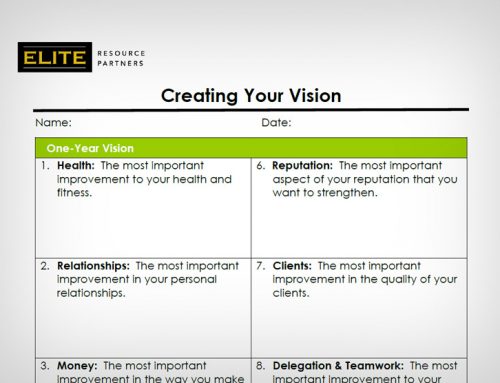Where do you set aside the money you’re saving for retirement? If you’re like many Americans, you save for retirement primarily through an employer’s retirement plan, according to Pew Research.1
Unfortunately, less than one-half of private sector employers sponsor retirement plans. Firms that have plans tend to be large.1
In part, that may be because of a misperception among smaller employers. Many small companies think sponsoring a retirement plan is too expensive. However, 45 percent of smaller employers have never researched retirement plans and just 23 percent have researched any options other than 401(k) plans, reported the 2018 Millennium Trust Small Business Retirement Survey.2
The fact is there are workplace retirement plan options developed specifically for smaller employers. These include:
- Savings Incentive Match Plans for Employees (SIMPLE) IRA Plan. Employers with fewer than 100 employees that have no workplace retirement plan can sponsor SIMPLE IRA Plans. They’re easy to administer, salary reduction plans that have no filing requirements.3
While there are exceptions, generally, all employees who were paid $5,000 or more during any two preceding calendar years, and who are expected to receive $5,000 or more during the calendar year, are eligible to participate. Employees decide if and how much to contribute. Contributions are made to IRA accounts, which are subject to the same investment, distribution, and rollover rules as Traditional IRAs.3, 4
Employers must make either a matching contributions or a non-elective contribution to employees’ accounts each year. Employer contributions to SIMPLE Plans may be deductible.5, 6
The pros and cons, according to the IRS, for SIMPLE Plans include:7
- They are easy and inexpensive to set up and operate.
- Employees share responsibility for their retirement preparations.
- No discrimination testing is required.
- Employer contributions are inflexible.
- The plan has lower contribution limits than some other retirement plans.
In addition, employers may be able to claim a tax credit equal to 50 percent of eligible startup costs, up to a maximum of $500 per year, for the first three years of plan operation.8
- Simplified Employee Pension (SEP) IRA Plan. Employers of all sizes can put a SEP Plan in place. Like SIMPLE Plans, they’re easy to administer, salary reduction plans that have no filing requirements.9
While there are exceptions, typically, any employee who is 21 or older, has worked for the company during three of the previous five years, and been paid $600 or more, may be eligible to participate.10
Employers make all contributions to SEP Plans. When employers choose to make contributions, they must contribute the same percentage of compensation to every employee’s IRA account. Employer contributions to SEP Plans may be deductible.9, 11
The pros and cons, according to the IRS, for SEP Plans include:7
- They are easy to set up and operate.
- They have low administrative costs.
- Employer contributions are flexible because the employer chooses when to contribute.
- Employers must contribute equally for all eligible employees.
Again, employers may be eligible for a plan start-up tax credit.
- Payroll Deduction IRA Plan. This may be the simplest workplace retirement plan option. There are no plan documents and no filing requirements. All the employer is required to do is transmit the authorized amount to IRA accounts that have been established by employees.12
Employees make all contributions to payroll deduction IRA Plans. Each employee is also responsible for choosing the financial institution and establishing the IRA account that will receive contributions.12
The pros and cons, according to the IRS, for IRA Payroll Deduction Plans include:12
- They are easy to set up and operate.
- There is little administrative burden or cost.
- Employees may not perceive the plan to be a benefit.
- There is no deduction for the business.
- Employees may or may not be able to deduct their contributions.
If you own or work for a small business that doesn’t currently provide employees with a way to save for retirement, a 401(k) plan is not the only option. If retirement is on your mind, it may be a good idea to educate your employer about the retirement plan options available to small businesses.
You also can save on your own in an Individual Retirement Account (IRA). It’s surprising when so many people are concerned about retirement, but relatively few American households (15 percent) contribute to IRAs outside of work.1
If you don’t have a workplace plan, setting up an IRA and automatically transferring funds from a checking or savings account is a good way to save for the future.
If you would like to learn more, please give us a call.
Sources:
2https://marketing.mtrustcompany.com/acton/media/19203/2018-small-business
3https://www.irs.gov/retirement-plans/simple-ira-plan-faqs-establishing-a-simple-ira-plan
4https://www.irs.gov/retirement-plans/simple-ira-plan-faqs-participation
5https://www.irs.gov/retirement-plans/simple-ira-plan-faqs-contributions
6https://www.irs.gov/retirement-plans/operating-a-simple-ira-plan
7https://www.irs.gov/retirement-plans/choosing-a-retirement-plan-simple-ira-plan
8https://www.irs.gov/retirement-plans/retirement-plans-startup-costs-tax-credit
9https://www.irs.gov/retirement-plans/choosing-a-retirement-plan-sep
11https://www.irs.gov/retirement-plans/operating-a-sep
12https://www.irs.gov/retirement-plans/choosing-a-retirement-plan-payroll-deduction-ira
Registered Representatives offer securities through Securities America, Inc., Member FINRA/SIPC. Advisory Services offered through Securities America Advisors, Inc. ConfidentVision (5210 McKinney Avenue, Suite 300, Dallas, TX 75205) and Securities America are unaffiliated. Insurance products issued through many fine carriers. Securities America and its representatives do not provide tax advice.
This material was prepared by Carson Coaching. Carson Coaching is not affiliated with the named broker/dealer.
The opinions voiced in this material are for general information only and are not intended to provide specific advice or recommendations for any individual. To determine which investment(s) may be appropriate for you, consult your financial advisor prior to investing.
This is not intended to be a substitute for specific individualized tax advice. It is suggested you discuss your specific tax issues with a qualified tax advisor.






